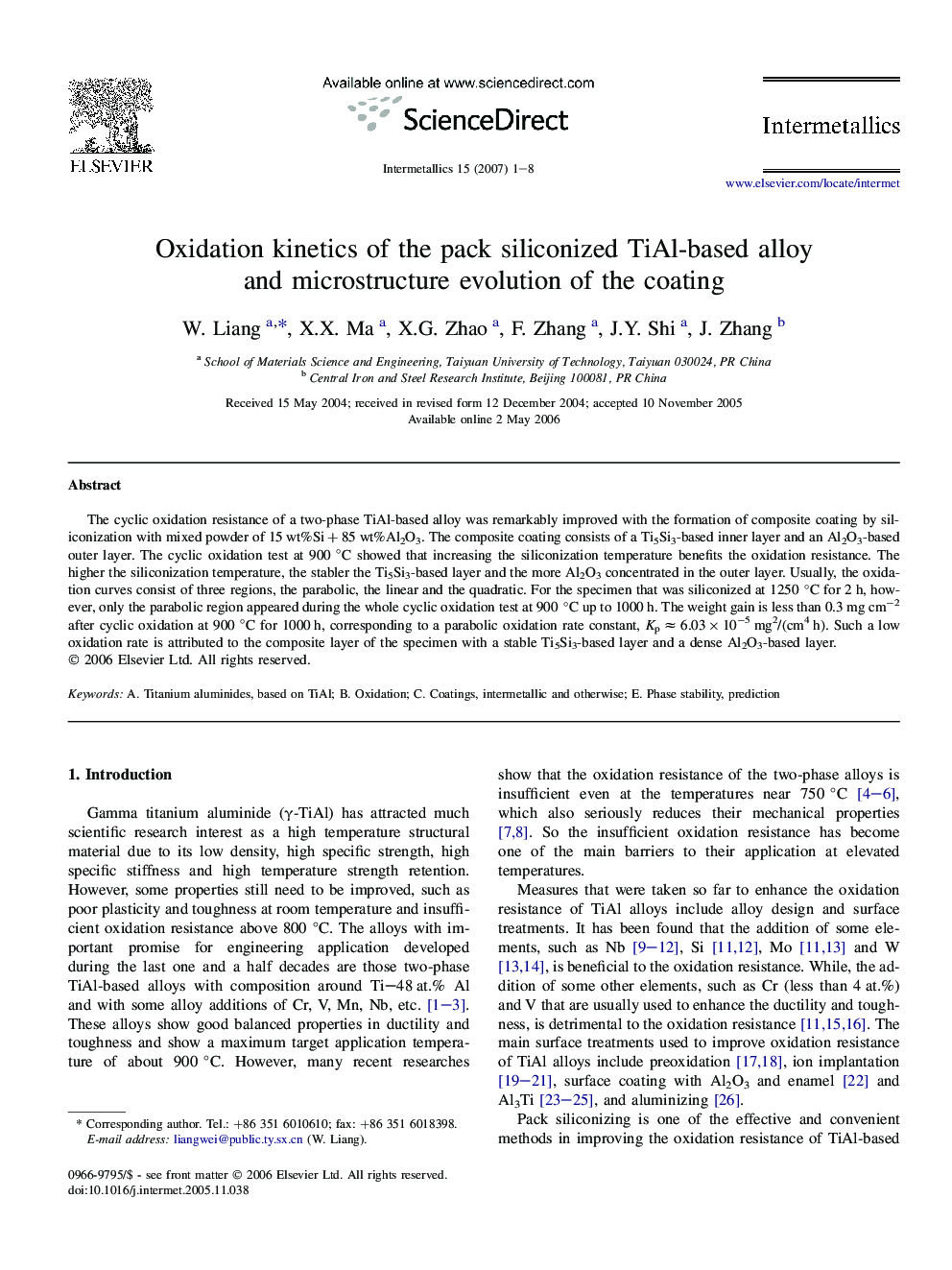| Article ID | Journal | Published Year | Pages | File Type |
|---|---|---|---|---|
| 1601569 | Intermetallics | 2007 | 8 Pages |
Abstract
The cyclic oxidation resistance of a two-phase TiAl-based alloy was remarkably improved with the formation of composite coating by siliconization with mixed powder of 15 wt%Si + 85 wt%Al2O3. The composite coating consists of a Ti5Si3-based inner layer and an Al2O3-based outer layer. The cyclic oxidation test at 900 °C showed that increasing the siliconization temperature benefits the oxidation resistance. The higher the siliconization temperature, the stabler the Ti5Si3-based layer and the more Al2O3 concentrated in the outer layer. Usually, the oxidation curves consist of three regions, the parabolic, the linear and the quadratic. For the specimen that was siliconized at 1250 °C for 2 h, however, only the parabolic region appeared during the whole cyclic oxidation test at 900 °C up to 1000 h. The weight gain is less than 0.3 mg cmâ2 after cyclic oxidation at 900 °C for 1000 h, corresponding to a parabolic oxidation rate constant, Kp â 6.03 Ã 10â5 mg2/(cm4 h). Such a low oxidation rate is attributed to the composite layer of the specimen with a stable Ti5Si3-based layer and a dense Al2O3-based layer.
Keywords
Related Topics
Physical Sciences and Engineering
Materials Science
Metals and Alloys
Authors
W. Liang, X.X. Ma, X.G. Zhao, F. Zhang, J.Y. Shi, J. Zhang,
